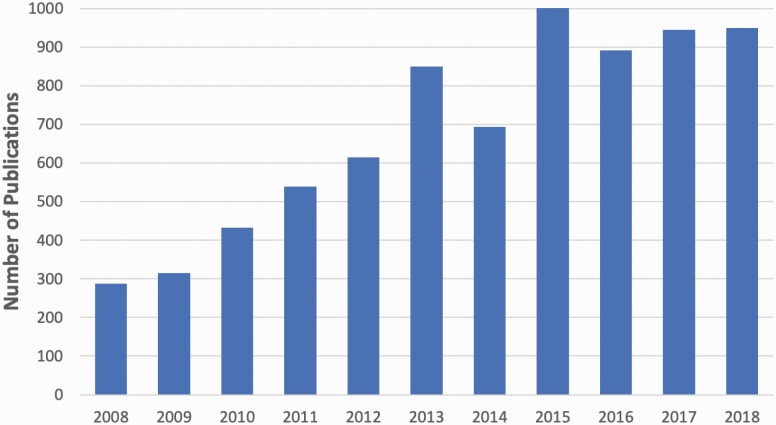Figure 1.
Publications resulting from NIH grant support with “circadian” as key word. Each bar represents the number of publications in that year that had the key word “circadian” and were supported by NIH grants. The number of such NIH-supported publications tripled across the first half of the decade and then remained stable thereafter. In the decade from 2008 to 2018, there were a total of 7,525 publications with the key word “circadian” that were supported by NIH grants. While this explosion of knowledge has revealed much about the workings of the circadian system and some of the consequences of disrupted circadian rhythmicity, relatively few grants and resulting manuscripts have focused on the pathophysiology or prevalence of CRSWDs or on testing new treatments for them.

